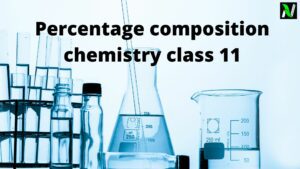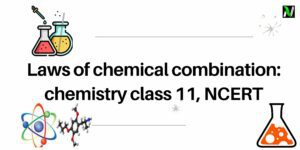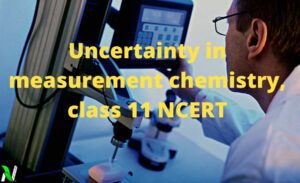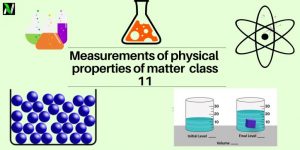Chemical formulas were obtained by determining the masses of all elements combined to form a molecule. Then we arrived at two important types of formulas in chemistry that is the molecular formula and the empirical formula. In this article, we will discuss the empirical formula and the molecular formula, so let’s get started…
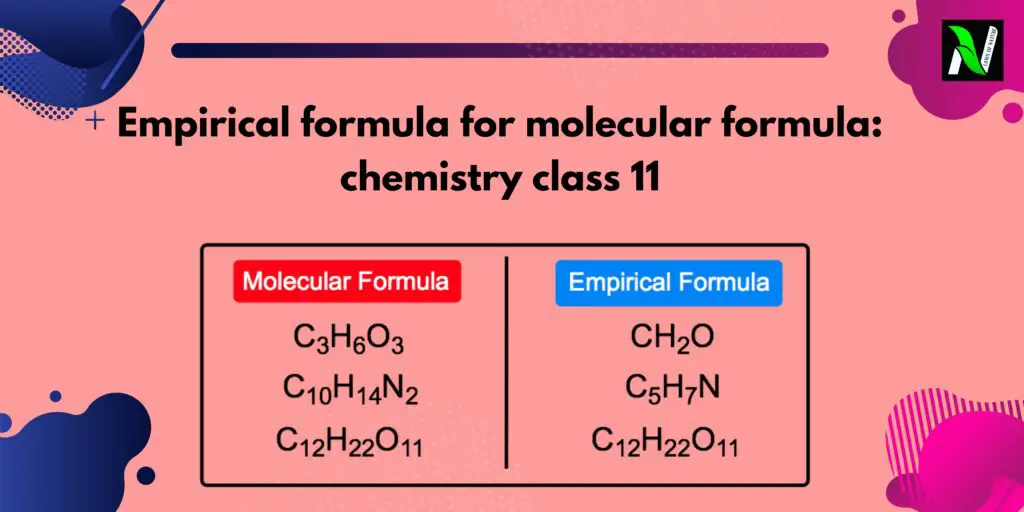
An empirical formula represents the simple whole number ratio of different atoms present in a compound, while the molecular formula shows the exact number of different types of atoms present in a molecule of a compound. If the mass percent of various elements present in a compound are known, their molecular formula can be determined. The molecular formula is also obtained if the molar mass is known.
What is the molecular formula?
- The molecular formula is the derived formula of molecules and represents the total number of individual atoms present in a molecule of a compound.
- A molecular formula uses a subscript that gives the actual number of each type of atom in a molecule of the compound.
- Molecular formulas are assigned gram molecular masses, which are simple integer multiples of the mass of the corresponding empirical formula.
The general statement relating molecular formula and the empirical formula is given as
| Molecular Formula = n × Empirical Formula |
What is the empirical formula?
- The molecular formula is the simplest formula for a compound, defined as the ratio of subscripts to the smallest possible integer number of elements present in the formula. It is also known as the simplest formula.
- An empirical formula for a compound is the formula of a substance written with the smallest whole number subscript.
- The empirical formula provides information about the ratio of the atomic numbers in the compound. The percentage composition of a compound leads directly to its empirical formula.
Read Also
- Percentage composition chemistry class 11: formula, definition, examples, NCERT
- Mole concept class 11 | definition, formula & solved examples, NCERT
Difference between empirical formula and a molecular formula
| Molecular Formula | Empirical Formula |
| A molecular formula shows the exact number of different types of atoms present in a molecule of a compound. | An empirical formula represents the simple whole number ratio of different atoms present in a compound |
| Example: For Acetylene the empirical formula is C2H2 | Example: For Acetylene the empirical formula is CH |

Solved examples
| Example. $1$ A compound contains $4.07 \%$ hydrogen, $24.27 \%$ carbon and $71.65 \%$ chlorine. Its molar mass is $98.96 \mathrm{~g}$. What are its empirical and molecular formulas? Solution Step 1. Conversion of a mass percent to grams Since we are having a mass percent, it is convenient to use $100 \mathrm{~g}$ of the compound as the starting material. Thus, in the $100 \mathrm{~g}$ sample of the above compound, $4.07 \mathrm{~g}$ hydrogen, $24.27 \mathrm{~g}$ carbon and $71.65 \mathrm{~g}$ chlorine are present. Step 2. Convert into the number of moles of each element. Divide the masses obtained above by the respective atomic masses of various elements. This gives the number of moles of constituent elements in the compound. Moles of hydrogen $=\frac{4.07 \mathrm{~g}}{1.008 \mathrm{~g}}=4.04$ Moles of carbon $=\frac{24.27 \mathrm{~g}}{12.01 \mathrm{~g}}=2.021$ Moles of chlorine $=\frac{71.65 \mathrm{~g}}{35.453 \mathrm{~g}}=2.021$ Step 3. Divide each of the mole values obtained above by the smallest number amongst them Since $2.021$ is smallest value, division by it gives a ratio of $2: 1: 1$ for $\mathrm{H}: \mathrm{C}: \mathrm{Cl}$. In case the ratios are not whole numbers, then they may be converted into whole numbers by multiplying by the suitable coefficient. Step 4. Write down the empirical formula by mentioning the numbers after writing the symbols of respective elements $\mathrm{CH}_2 \mathrm{Cl}$ is, thus, the empirical formula of the above compound. Step 5. Writing molecular formula (a) Determine empirical formula mass by adding the atomic masses of various atoms present in the empirical formula. For $\mathrm{CH}_2 \mathrm{Cl}$, empirical formula mass is $12.01+(2 \times 1.008)+35.453$ $=49.48 \mathrm{~g}$ (b) Divide Molar mass by the empirical formula mass $\frac{\text { Molar mass }}{\text { Empirical formula mass }}=\frac{98.96 \mathrm{~g}}{49.48 \mathrm{~g}}$ $=2=(n)$ (c) Multiply the empirical formula by $n$ obtained above to get the molecular formula Empirical formula $=\mathrm{CH}_2 \mathrm{Cl}, n=2$. Hence molecular formula is $\mathrm{C}_2 \mathrm{H}_4 \mathrm{Cl}_2$. |
| Example. $2$ The empirical formula of a compound is COCl2 and its molecular mass is 90.00u. Find out the molecular formula of that compound. Solution COCl2 = C + O + 2(Cl) = 12 + 16 + 2(35.5) = 99 u The empirical formula is the same as molecular mass as n=1, this means the molecular formula is COCl2. |
| Example. $3$ The empirical formula of Boron Hydride is BH3. Calculate the molecular formula when the measured mass of the compound is 27.66. Solution The atomic mass is given by = B + 3(H) = 10.81 + 3(1) = 13.81u But, the measured molecular mass for the Boron atom is given as 27.66u By using the expression, Molecular formula = n × empirical formula n = molecular formula/empirical formula \begin{array}{l}= \frac {27.66}{13.81} = 2\end{array} Putting the value of n = 2 in the empirical formula we get the molecular formula as Molecular formula = 2(BH3) = B2H6. |
Read Also
- Atomic mass and molecular mass: chemistry class 11, NCERT
- John dalton’s atomic theory: postulates & limitations, class 11, NCERT
- Laws of chemical combination: chemistry class 11, NCERT
Frequently Asked Questions – FAQs
Why is it called an empirical formula?
If there is no subscription, it means there is an atom in the compound. The most direct formulation is also known as an analytical formula. The mathematical formulation is the ratio of the composite elements present. The subscripts in the formula are the number of atoms, resulting in a whole relationship between them.
What is an empirical formula with an example?
In chemistry, the empirical formula of a chemical compound is the simplest whole number ratio of atoms present in a compound. A simple example of this concept is that the empirical formula of sulfur monoxide, or SO, would simply be SO, as is the empirical formula of disulfur dioxide, S2O2
How are empirical and molecular formulas similar?
Molecular formulas tell you how many atoms of each element are in a compound, and empirical formulas tell you the simplest or most reduced ratio of elements in a compound. If a compound’s molecular formula cannot be reduced anymore, then the empirical formula is the same as the molecular formula.
What is called molecular formula?
The molecular formula is an expression that defines the number of atoms of each element in one molecule of a compound. It shows the actual number of each atom in a molecule. For example, the molecular formula of propane is C4H10. In this formula, there are 4 carbon atoms and 10 hydrogen atoms in the given compound.
Is CH4 both empirical and molecular?
The molecular formula of methane is CH4 and because it contains only one carbon atom, that is also its empirical formula.
Stay tuned with Laws Of Nature for more useful and interesting content.


